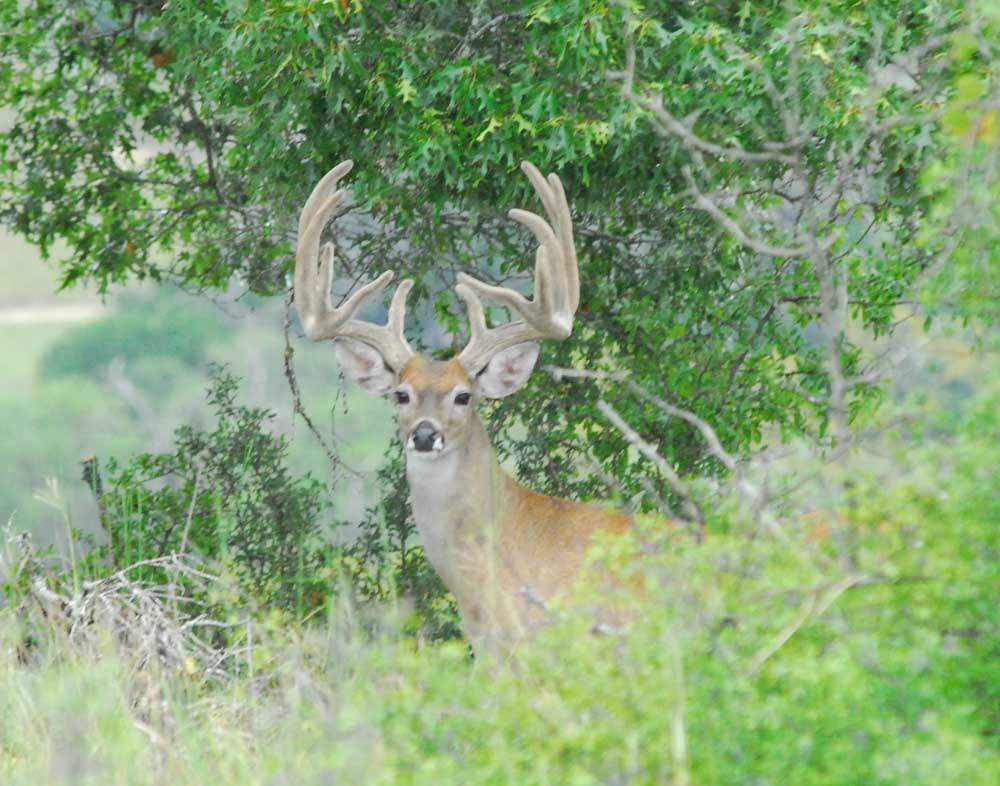Never Too Soon: A really early look at a potentially good Texas deer season
Published 11:45 pm Friday, June 21, 2024

- Deer season may still be more than four months away, but good spring rains in much of the state give hunters a lot to look forward to. (Steve Knight/Tyler Morning Telegraph)
Sure, the hottest part of summer is still a few weeks off, but why not take an early look at deer season projections.
At least for now, drought is not the leading factor in much of the state.
“While not quite as profound as spring of 2022, much needed rain during March–May of this year has led to over 50% of Texas experiencing no drought conditions and an additional 23% considered to be only abnormally dry during these months,” said Blaise Korzekwa, Texas Parks and Wildlife Department’s white-tailed deer program leader.
The result in the areas that have had rain should mean an increase in fawn survival and good antler development.
Two regions that should really benefit are the Post Oak Savannah and the Pineywoods.
“Similar to many areas of the state, the Post Oak Savannah ecoregion has enjoyed a good spring which should contribute to average or above-average fawn production this year,” Korzekwa said.
While the sex ratio in the region is out of alignment at about 3.9 does per buck, 39% of the bucks harvested were 4.5 years old or older last season, according to TPWD.
“There should be a good crop of bucks in the 4.5-plus-year-old age classes based on previous fawn crops. With adequate rainfall this spring, hunters should have opportunities to harvest a quality buck that is at least 4.5 years old,” Korzekwa said.
Deer numbers have held steady in the Pineywoods region for three years even after low fawn production in 2021 and 2022. The region saw a bump last year and should again this year.
“Based on previous years fawn production, hunters should expect a decent cohort of 4.5- and 5.5-year-old bucks, but below-average cohort of 2.5- and 3.5-year-old bucks. Hunters should continue to practice quality deer management and allow bucks to reach 4.5 years old, especially with the lower number of young bucks on the horizon,” Korzekwa said.
About 51% of the 2023 buck harvest was 3.5-year-old deer, but only 24% were 4.5 and older.
“(The harvest is) a byproduct of the antler restriction regulation and hunters being more aware of the antler potential of older bucks,” Korzekwa said.
He added the buck harvest trend should hold in the Pineywoods, however, in both the Post Oak and Pineywoods regions there is a chance for an increase in the antlerless harvest with doe days being extended to the Sunday following Thanksgiving this season.
One region that did not benefit as much from spring rains is the Edwards Plateau.
“The Edwards Plateau has the highest deer population in the state with an estimate of 1,514,387 deer. Severe drought conditions in this ecoregion over the last few years has lowered the population around 25%, but it still holds the highest density of deer in the state,” Korzekwa said.
Because there are so many deer in the region, hunter harvest success last season was 79%.
“Within the Edwards Plateau ecoregion, hunters should expect an increase in the number of bucks in the 3.5–5.5-year-old age class because of improved fawn recruitment in 2019–2021. Below-average fawn crops in 2017 and 2018 will keep the quantity of mature bucks lower than hoped for, but there should be a good number of 5.5-year-old deer offering opportunities at harvesting a mature buck,” Korzekwa said.
South Texas is South Texas when it comes to quality bucks, but even with the emphasis on older bucks, hunter harvest success was 79% in 2023. Bucks 4.5 and older were 64% of that harvest, and 56% were 5.5 and older.
This year should not be an exception in quality even though off-and-on drought has slowed fawn survival in recent years.
“The 3.5- and 4.5-year-old age classes will be abundant and offer plenty of mature bucks in the coming years. Many ranches in the region manage for older age class bucks and the 5.5–6.5 age class should be well represented this year,” Korzekwa said.
The goal of bigger bucks in the region is added by a 1.8 doe to buck ratio, compared to ratios of 3 and more in many other areas around the state.
The other popular white-tail deer hunting region in the state, the Cross Timbers, is setting up for a good year. The region has the second highest deer population behind the Edwards Plateau.
“Recently, harvest rates have significantly increased in the ecoregion, but population growth has remained relatively stable in the ecoregion due to fawn crops averaging 46% over the last five years. Because of the relatively consistent fawn production, buck age structure is generally well distributed across all age classes. However, hunters will likely see fewer 2.5-year-old bucks this year due to poor fawn recruitment in 2022, but every other age class will be well represented,” Korzekwa said.
He added that hunters in the region have been focusing on older bucks, with 41% of the 2023 harvest being 4.5 and older.
“Timely spring rainfall should yield similar harvest rates for this year and historical fawn recruitment should produce an above-average mature buck harvest,” Korzekwa said.
So, as you battle another hot summer with an eye toward opening day, remember Texas has a deer population estimated at 4.7 million and growing after a 2022 drought. No matter where you hunt there should be plenty of deer, and starting now you have time to find them.
— Contact Knight at outdoor@tylerpaper.com






